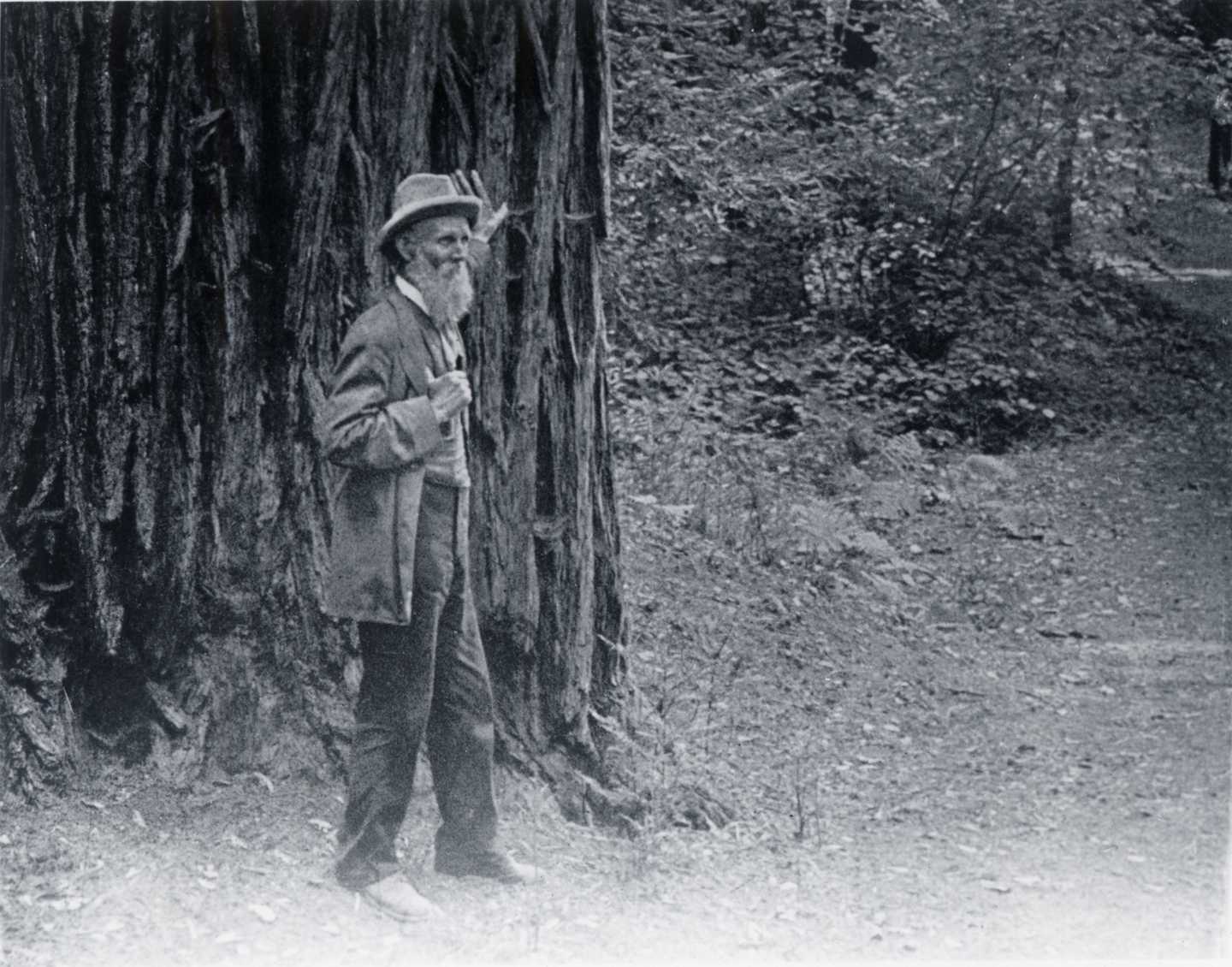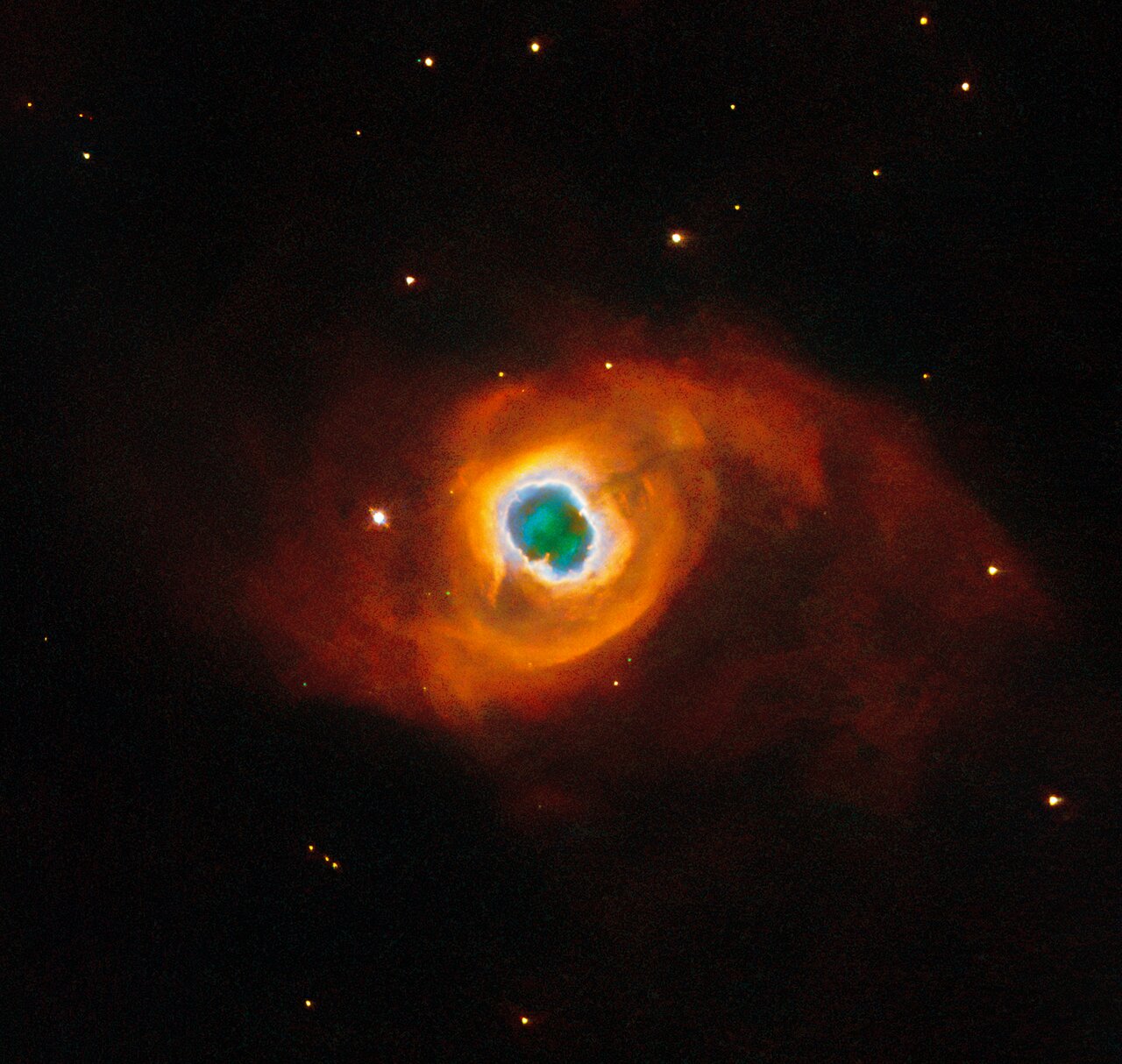Blog

Paul Jeffrey (April 8, 1933 – March 20, 2015) was an American jazz tenor saxophonist, arranger, and educator. He was a member of Thelonious Monk‘s regular group from 1970–1975, and also worked extensively with other musicians such as Charles Mingus, Dizzy Gillespie, Clark Terry, Lionel Hampton and B.B. King.
more...This image from the NASA/ESA Hubble Space Telescope features the unbarred spiral galaxy NGC 4414, roughly 51 million light-years away from Earth in the constellation Coma Berenices. You can see an old image of NGC 4414 that features Hubble data from 1995 and 1999 here, which was captured as one of the telescope’s primary missions to determine the distance to galaxies. This was achieved as part of an ongoing research effort to study Cepheid variable stars. Cepheids are a special type of variable star with very stable and predictable brightness variations. The period of these variations depends on physical properties of the stars such as their mass and true brightness. This means that astronomers, just by looking at the variability of their light, can find out about the Cepheids’ physical nature, which then can be used very effectively to determine their distance. For this reason cosmologists call Cepheids ‘standard candles’. Astronomers have used Hubble to observe Cepheids, like those that reside in NGC 4414, with extraordinary results. The Cepheids have then been used as stepping-stones to make distance measurements for supernovae, which have, in turn, given a measure for the scale of the Universe. Today we know the age of the Universe to a much higher precision than before Hubble: around 13.7 billion years. [Image description: A large spiral galaxy is seen tilted diagonally. The arms of the galaxy’s disc are speckled with glowing patches; some are blue in colour, others are pink, showing gas illuminated by new stars. A faint glow surrounds the galaxy, which lies on a dark, nearly empty background. The galaxy’s centre glows in white.] Links Image B (closeup of NGC 4414’s supernovae) Pan of NGC 4414.

more...
Julian Charles John Lennon (born John Charles Julian Lennon; 8 April 1963) is an English musician, photographer, author, and philanthropist. He is the son of Beatlesmember John Lennon and his first wife Cynthia; Julian is named after his paternal grandmother Julia. Julian inspired three Beatles songs: “Lucy in the Sky with Diamonds” (1967), “Hey Jude” (1968), and “Good Night” (1968).
Lennon started a music career in 1984 with the album Valotte, best known for “Too Late for Goodbyes” and the title track, and has since released six more albums. He has held exhibitions of his fine-art photography and has written several children’s books. In 2006, Lennon produced the environmental documentary film Whaledreamers, which won eight international awards. In 2007, he founded The White Feather Foundation (TWFF), whose stated mission goal is to address “environmental and humanitarian issues”.
In 2020, Lennon was executive producer of the Netflix documentary Kiss the Groundabout regenerative agriculture and the follow-up film Common Ground. In 2022, Lennon was executive producer of the documentary film Women of the White Buffalo, which chronicles the lives of women living on the Lakota Pine Ridge Indian Reservation.
more...Santiago Jiménez Jr. (aka Santiago Henriquez Jiménez) (born April 8, 1944) is an American folk musician who received a National Heritage Fellowship in 2000 for lifetime achievement in traditional Tex-Mex/folk music, and a National Medal of Arts in 2016. He has been nominated for three Grammys.
more...Carmen Mercedes McRae (April 8, 1920 – November 10, 1994 Harlem) was an American jazzsinger. She is considered one of the most influential jazz vocalists of the 20th century and is remembered for her behind-the-beat phrasing and ironic interpretation of lyrics. In her late teens and early twenties, McRae played piano at Minton’s Playhouse, sang as a chorus girl, and worked as a secretary. It was at Minton’s where she met trumpeterDizzy Gillespie, bassist Oscar Pettiford, and drummer Kenny Clarke, had her first important job as a pianist with Benny Carter’s big band (1944), worked with Count Basie(1944) and under the name “Carmen Clarke” (having married Clarke)[4] made her first recording as pianist with the Mercer Ellington Band (1946–47). But it was while working in Brooklyn that she came to the attention of Decca‘s Milt Gabler. Her five-year association with Decca yielded 12 LPs.
more...The swirling, paint-like clouds in the darkness of space in this stunning image seem surreal, like a portal to another world opening up before us. In fact, the subject of this ESA/Hubble Picture of the Week is very real. We are seeing vast clouds of ionised atoms and molecules, thrown into space by a dying star. This is a planetary nebula named Kohoutek 4-55, a member of the Milky Way galaxy situated just 4600 light-years away in the constellation Cygnus (the Swan).
Planetary nebulae are the spectacular final display at the end of a giant star’s life. Once a red giant star has exhausted its available fuel and shed its last layers of gas, its compact core will contract further, enabling a final burst of nuclear fusion. The exposed core reaches extremely hot temperatures, radiating very energetic ultraviolet light that energises the enormous clouds of cast-off gas. Molecules in the gas are ionised and glow brightly; here, red and orange indicate nitrogen molecules, green is hydrogen and blue shows oxygen in the nebula. Kohoutek 4-55 has an uncommon, multi-layered form: a bright inner ring is surrounded by a fainter layer of gas, all wrapped in a broad halo of ionised nitrogen. The spectacle is bittersweet, as the brief phase of fusion in the core will end after mere tens of thousands of years, leaving a white dwarf that will never illuminate the clouds around it again.
This image itself is also a swan song, the final work of one of Hubble’s instruments: the Wide Field and Planetary Camera 2 (WFPC2). Installed in 1993 to replace the original Wide Field and Planetary Camera, WFPC2 was responsible for some of Hubble’s most enduring images and fascinating discoveries. It in turn was replaced by the Wide Field Camera 3 in 2009, during Hubble’s final servicing mission. The data for this image were taken a mere ten days before the instrument was removed from the telescope, as a fitting send-off for WFPC2 after 16 years’ work. The latest and most advanced processing techniques have been used to bring the data to life one more time, producing this breathtaking new view of Kohoutek 4-55.
[Image Description: A planetary nebula, a glowing shell of material thrown off by a star. A small central region of greenish clouds is encircled by a glowing, jagged ring, like a hole torn in fabric. A band of silvery-blue clouds outside this is again encircled by a larger, fainter yellow ring of gas. Puffy, smoky clouds of orange and red gas billow out from there into a large oval nebula, fading into the dark background of space.]

Ravi Shankar (born Robindro Shaunkor Chowdhury, sometimes spelled as Rabindra Shankar Chowdhury; 7 April 1920 – 11 December 2012) was an Indian sitarist and composer. A sitar virtuoso, he became the world’s best-known expert of Indian classical music (in Sitar) in the second half of the 20th century, and influenced many musicians in India and throughout the world. Shankar was awarded India’s highest civilian honour, the Bharat Ratna, in 1999. He is also the father of American singer Norah Jones and British-American musician and sitarplayer Anoushka Shankar.
Shankar was born to a Bengali family in India, and spent his youth as a dancer touring India and Europe with the dance group of his brother Uday Shankar. At age 18, he gave up dancing to pursue a career in music, studying the sitar for seven years under court musician Allauddin Khan. After finishing his studies in 1944, Shankar worked as a composer, creating the music for the Apu Trilogy by Satyajit Ray, and was music director of All India Radio, New Delhi, from 1949 to 1956. He was nominated for the Academy Award for Best Original Score for scoring the blockbuster Gandhi (1982).
In 1956, Shankar began to tour Europe and the Americas playing Indian classical musicand increased its popularity there in the 1960s through teaching, performance, and his association with violinist Yehudi Menuhin and Beatles guitarist George Harrison. His influence on Harrison helped popularize the use of Indian instruments in Western pop music in the latter half of the 1960s. Shankar engaged Western music by writing compositions for sitar and orchestra and toured the world in the 1970s and 1980s. From 1986 to 1992, he served as a nominated member of Rajya Sabha, the upper chamber of the Parliament of India. He continued to perform until the end of his life. He was a recipient of numerous prestigious musical accolades, including a Polar Music Prize and four Grammy Awards, including Album of the Year for The Concert for Bangladesh in 1973.
more...Ramón “
Mongo” Santamaría Rodríguez (April 7, 1917 – February 1, 2003) was a Cuban percussionist and bandleader who spent most of his career in the United States. Primarily a conga drummer, Santamaría was a leading figure in the pachanga and boogaloo dance crazes of the 1960s. His biggest hit was his rendition of Herbie Hancock‘s “Watermelon Man“, which was inducted into the Grammy Hall of Fame in 1998. From the 1970s, he recorded mainly salsa and Latin jazz, before retiring in the late 1990s.
Mongo learned to play the congas as an amateur rumba musician in the streets of Havana. He then learned the bongos from Clemente “Chicho” Piquero and toured with various successful bands such as the Lecuona Cuban Boys and Sonora Matancera.In 1950, he moved to New York City, where he became Tito Puente‘s conguero and in 1957 he joined Cal Tjader‘s band. He then formed his own charanga, while at the same time recording some of the first rumba and Santería music albums. By the end of the decade, he had his first pachanga hit, “Para ti”. He then became a pioneer of boogaloo with “Watermelon Man” and later signed record deals with Columbia, Atlantic and Fania. He collaborated with salsa artists and became a member of the Fania All-Stars, often showcasing his conga solos against Ray Barretto. In his later years, Santamaría recorded mostly Latin jazz for Concord Jazz and Chesky Records.
more...Billie Holiday (born Eleanora Fagan; April 7, 1915 – July 17, 1959) was an American jazz and swing music singer. Nicknamed “Lady Day” by her friend and music partner, Lester Young, Holiday made a significant contribution to jazz music and pop singing. Her vocal style, strongly influenced by jazz instrumentalists, inspired a new way of manipulating phrasing and tempo. She was known for her vocal delivery and improvisational skills.
After a turbulent childhood, Holiday began singing in nightclubs in Harlem where she was heard by producer John Hammond, who liked her voice. She signed a recording contract with Brunswick in 1935. Her collaboration with Teddy Wilson produced the hit “What a Little Moonlight Can Do“, which became a jazz standard. Throughout the 1930s and 1940s, Holiday had mainstream success on labels such as Columbia and Decca. By the late 1940s, however, she was beset with legal troubles and drug abuse. After a short prison sentence, she performed a sold-out concert at Carnegie Hall. She was a successful concert performer throughout the 1950s, with two further sold-out shows at Carnegie Hall. Because of personal struggles and an altered voice, her final recordings were met with mixed reaction, but were mild commercial successes. Her final album, Lady in Satin, was released in 1958. Holiday died of heart failure on July 17, 1959, at age 44.
Holiday won four Grammy Awards, all of them posthumously, for Best Historical Album. She was inducted into the Grammy Hall of Fame and the National Rhythm & Blues Hall of Fame. In 2000, she was also inducted into the Rock & Roll Hall of Fame as an early influence; their website states that “Billie Holiday changed jazz forever”. She was named one of the 50 Great Voices by NPR and was ranked fourth on the Rolling Stonelist of “200 Greatest Singers of All Time” (2023). Several films about her life have been released, most recently The United States vs. Billie Holiday (2021).
more...Amadou Bagayoko of music duo Amadou & Mariam dies aged 70
Amadou Bagayoko (guitar and vocals) (24 October 1954 – 4 April 2025)
Malian singer and guitarist, who sold millions of albums with his wife, Mariam Doumbia, had been ill for a while, say family.
The guitarist and singer Amadou Bagayoko of the Malian music duo Amadou & Mariam has died aged 70 after an illness, his family said, paying tribute to the Grammy-nominated blind musician.
Amadou and his wife, Mariam Doumbia, formed a group whose blend of traditional Malian music with rock guitars and western blues sold millions of albums across the world.
Among other achievements the couple, who met at the institute for the young blind in the Malian capital, Bamako, composed the official song for the 2006 football World Cup in Germany and played at the closing ceremony concert for the 2024 Olympic Games in Paris.
“He had been ill for a while,” Amadou’s son-in-law Youssouf Fadiga told Agence-France Presse.
Ram Dass (born Richard Alpert; April 6, 1931 – December 22, 2019), also known as Baba Ram Dass, was an American spiritual teacher, guru of modern yoga, psychologist, and writer. His best-selling 1971 book Be Here Now, which has been described by multiple reviewers as “seminal”, helped popularize Eastern spirituality and yoga in the West. He authored or co-authored twelve more books on spirituality over the next four decades, including Grist for the Mill (1977), How Can I Help? (1985), and Polishing the Mirror (2013).
Ram Dass was personally and professionally associated with Timothy Leary at Harvard University in the early 1960s. Then known as Richard Alpert, he conducted research with Leary on the therapeutic effects of psychedelic drugs. In addition, Alpert assisted Harvard Divinity School graduate student Walter Pahnke in his 1962 “Good Friday Experiment” with theology students, the first controlled, double-blind study of drugs and the mystical experience. While not illegal at the time, their research was controversial and led to Leary’s and Alpert’s dismissal from Harvard in 1963.
In 1967, Alpert traveled to India and became a disciple of Hindu guru Neem Karoli Baba, who gave him the name Ram Dass, meaning “Servant of Ram,” but usually rendered simply as “Servant of God” for Western audiences. In the following years, he co-founded the charitable organizations Seva Foundation and Hanuman Foundation. From the 1970s to the 1990s, he traveled extensively, giving talks and retreats and holding fundraisers for charitable causes. In 1997, he had a stroke, which left him with paralysis and expressive aphasia. He eventually grew to interpret this event as an act of grace, learning to speak again and continuing to teach and write books. After becoming seriously ill during a trip to India in 2004, he gave up traveling and moved to Maui, Hawaii, where he hosted annual retreats with other spiritual teachers until his death in 2019.
more...
More Posts
- Racism 1957 to 2021
- The Cozmos with Arp 86
- Esperanza Spalding
- Winton Marsalis
- Chuck Berry
- Ambrose Thibodeaux
- World Music with Ogún Afrobeat
- Daily Roots with Don Carlos
- The Cozmos with M33
- Ziggy Marley
- Rico Rodriguez
- Barney Kessel
- Cozy Cole
- World Music with Kadialy Kouyaté
- Daily Roots with John Holt
- The Cozmos with M45
- Roy Hargrove
- Angel Cachete Maldonado
- Carli Muñoz
- Big Joe Williams



